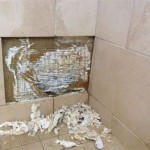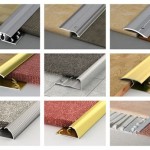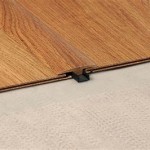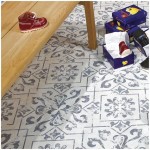Can You Put Hardwood Floor Over Asbestos Tile? A Comprehensive Guide
The question of installing hardwood flooring over existing asbestos-containing floor tiles is a common one, particularly in older homes built prior to the 1980s. Asbestos, once lauded for its fire-resistant and insulating properties, is now recognized as a serious health hazard when its fibers become airborne and are inhaled. Understanding the risks, regulations, and viable options surrounding this scenario is crucial for homeowners and contractors alike.
This article will delve into the multifaceted aspects of installing hardwood floors over asbestos tile, outlining the potential dangers, examining the regulatory landscape, and exploring the various methods available to mitigate risk. The primary focus will be on providing clear, objective information to enable informed decision-making regarding the flooring project.
It is important to acknowledge the potential presence of asbestos in older floor tiles. Asbestos was frequently incorporated into vinyl floor tiles and the associated mastic adhesives to enhance their durability and fire resistance. Disturbing these tiles during removal or renovation can release asbestos fibers into the air, posing a significant health risk, including asbestosis, lung cancer, and mesothelioma.
Before initiating any flooring project in a building constructed before the 1980s, it is essential to have the existing floor tiles professionally tested for asbestos. This should be performed by a qualified asbestos inspector or testing laboratory. Avoid attempting to collect samples yourself, as this could inadvertently release asbestos fibers. The testing process typically involves collecting small samples of the tile and mastic, which are then analyzed under a microscope to identify the presence and type of asbestos fibers.
If the testing results confirm the presence of asbestos, several options are available. These options include asbestos abatement (removal), encapsulation, and covering the existing tile with new flooring. Each option presents its own set of advantages and disadvantages, which must be carefully considered based on budget, time constraints, and long-term goals.
Understanding the Risks Associated with Disturbing Asbestos
The primary concern when dealing with asbestos-containing materials is the risk of fiber release. Asbestos fibers are microscopic and, when inhaled, can become lodged in the lungs. Over time, this exposure can lead to serious respiratory illnesses. The severity of these illnesses depends on the duration and intensity of exposure. Activities such as breaking, sanding, or scraping asbestos-containing floor tiles significantly increase the likelihood of fiber release.
Even seemingly minor disturbances, such as drilling or nailing through asbestos tiles to secure hardwood flooring, can release fibers. The vibration from these activities can dislodge fibers from the tile matrix, making them airborne. Therefore, any activity that could potentially compromise the integrity of the asbestos-containing tiles must be approached with extreme caution.
It is crucial to emphasize that asbestos exposure is cumulative. There is no safe level of asbestos exposure. Even low levels of exposure over extended periods can increase the risk of developing asbestos-related diseases. Therefore, minimizing or eliminating any potential for exposure is paramount.
Furthermore, the health risks associated with asbestos exposure extend beyond the individual performing the work. Airborne fibers can easily spread throughout the home, potentially exposing other residents, including children and pets. This underscores the importance of containment measures and proper personal protective equipment when working with or near asbestos-containing materials.
In addition to the direct health risks, improper handling of asbestos-containing materials can also lead to legal and financial repercussions. Many jurisdictions have strict regulations governing the removal and disposal of asbestos. Violations of these regulations can result in substantial fines and penalties.
Exploring the Option of Covering Asbestos Tile with Hardwood Flooring
Covering asbestos-containing floor tiles with new flooring, including hardwood, is a viable option under certain circumstances. This approach, known as encapsulation, essentially seals the asbestos tiles in place, preventing the release of fibers into the air. However, several critical factors must be considered to ensure the effectiveness and safety of encapsulation.
First and foremost, the existing asbestos tile must be in good condition. If the tiles are cracked, broken, or significantly damaged, encapsulation may not be appropriate. Damaged tiles are more likely to release fibers, even when covered. Any loose or damaged tiles must be properly addressed before proceeding with encapsulation. This may involve carefully securing loose tiles with a suitable adhesive or, in more severe cases, professional asbestos abatement.
The subfloor beneath the asbestos tile must also be evaluated. A solid, level, and stable subfloor is essential for successful hardwood flooring installation. Any deficiencies in the subfloor, such as unevenness, rot, or moisture damage, must be repaired before covering the asbestos tile. Failure to address these issues can compromise the integrity of the hardwood floor and potentially lead to future problems.
When installing hardwood over asbestos tile, it is generally recommended to use a floating floor system. This type of installation involves interlocking the hardwood planks without directly attaching them to the subfloor. Floating floors minimize the need for nails or screws that could penetrate the asbestos tile and release fibers. A suitable underlayment should be installed between the asbestos tile and the hardwood floor to provide cushioning, sound insulation, and moisture protection.
Another critical consideration is the transition between the new hardwood floor and adjacent flooring surfaces. The added thickness of the hardwood floor and underlayment will create a height difference, which may require transition strips or ramps to ensure a smooth and safe transition. These transitions should be carefully designed and installed to prevent tripping hazards.
It is also important to consider the long-term implications of covering asbestos tile. While encapsulation can provide a safe and effective solution in the short term, it does not eliminate the asbestos hazard. Future renovations or demolition work could potentially disturb the asbestos tile, requiring costly and specialized abatement procedures. Therefore, it is essential to document the presence of asbestos tile and inform any future homeowners or contractors of its location.
Furthermore, the added weight of the hardwood floor could potentially stress the existing subfloor and underlying structure. A structural engineer may need to be consulted to assess the load-bearing capacity of the floor and ensure that it can safely support the additional weight. This is particularly important in older homes or buildings with known structural issues.
Regulatory Compliance and Professional Guidance
Navigating the regulations surrounding asbestos abatement and encapsulation can be complex and vary depending on local, state, and federal guidelines. It is essential to consult with local regulatory agencies and qualified asbestos professionals to ensure compliance with all applicable laws and regulations.
Many jurisdictions require specific permits and certifications for asbestos abatement work. Failure to obtain the necessary permits can result in significant fines and legal repercussions. Furthermore, asbestos abatement work must be performed by licensed and trained professionals who adhere to strict safety protocols.
Even when encapsulating asbestos tile, it is recommended to consult with an asbestos professional. They can assess the condition of the existing tile, provide guidance on appropriate encapsulation methods, and ensure that the work is performed safely and effectively. They can also help develop a long-term management plan for the asbestos-containing materials.
Before hiring any contractor to perform flooring work in a building with asbestos-containing materials, it is crucial to verify their qualifications and experience. Ask for proof of asbestos training and certification, and check their references. A reputable contractor will be knowledgeable about asbestos regulations and will take the necessary precautions to protect workers and occupants from exposure.
In addition to regulatory compliance, ethical considerations should also guide the flooring project. Transparency and honesty are essential when dealing with asbestos-containing materials. Inform all parties involved, including workers, residents, and future owners, about the presence of asbestos and the steps being taken to manage it safely.
Document all aspects of the flooring project, including asbestos testing results, encapsulation methods, and any repairs or alterations made to the subfloor. This documentation will provide a valuable record for future reference and can help ensure that the asbestos-containing materials are managed responsibly over time.
Ultimately, the decision of whether or not to install hardwood flooring over asbestos tile should be based on a thorough assessment of the risks, regulations, and available options. Professional guidance and careful planning are essential to ensure the safety and well-being of all involved. While covering asbestos tile can be a viable solution, it is not a substitute for proper asbestos abatement when necessary.

Installing Hardwood Over Asbestos Tiles Homeadvisor

How To Install Hardwood Flooring Over Asbestos Tiles 123

Flooring That Can Be Installed Over Asbestos Tile

Can I Put A New Floor Over Asbestos Tiles Branch Environmental

How To Seal Asbestos Tiles Hunker

Flooring That Can Be Installed Over Asbestos Tile

How To Install Tile Over Asbestos Ehow

How To Waterproof A Basement

Asbestos Floor Tiles 101 What To Know About This Old Home Hazard Bob Vila

Is It Epa Acceptable To Cover Asbestos Tiles With Hometalk
Related Posts








